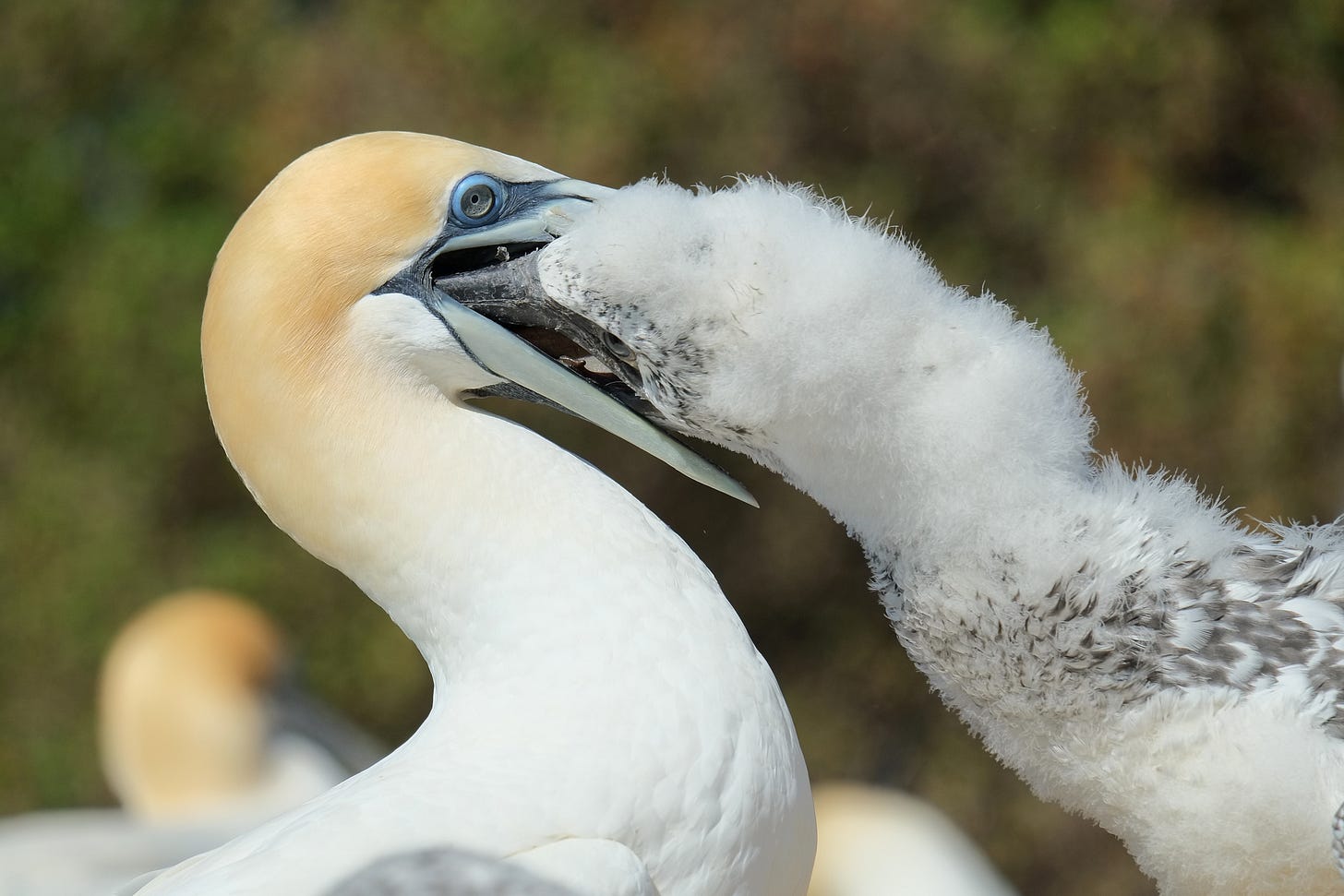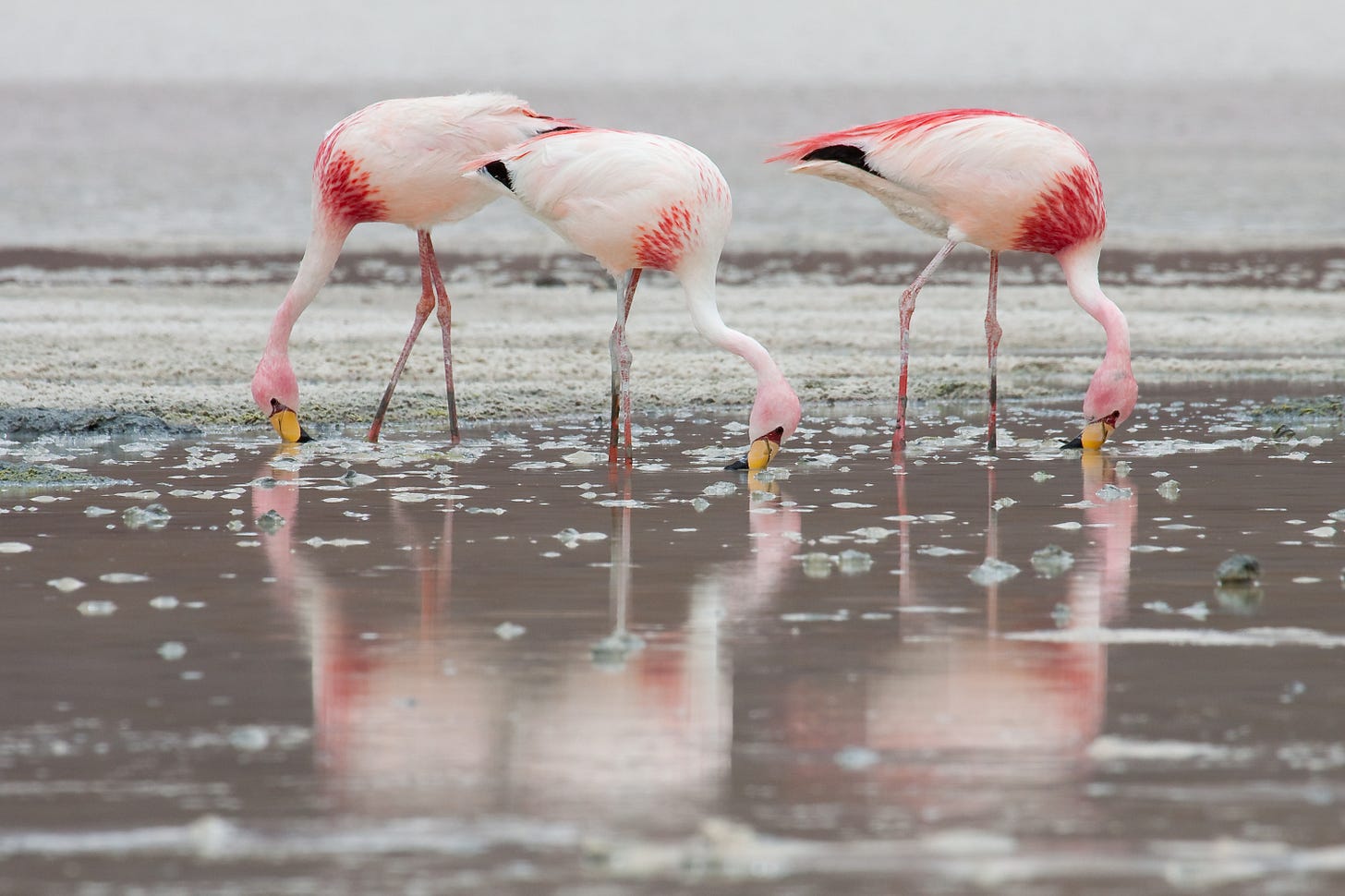Chiffchaff-chuffed
Every year or so (to, I have to say, diminishing returns) I post this on whatever social media platform I happen to be on.
It’s a nice enough gag, I suppose. One for the birders, for sure, but luckily a lot of my followers fit that description, so it goes down well enough.
Anyway, every so often those nice folk at The Guardian let me write about nature, so as it’s June I had a go at the chiffchaff.
Gannet
I was a poor traveller, back in the day.
The nausea would set in about a mile from home, only intensifying as the journey continued. The smell of the car didn’t help. My olfactory memory holds, and can recall at will, a distinctive odour apparently peculiar to the cars of the 1970s. Fords, Volvos, Peugeots, whatever – they smelled of hot plastic seats, icing sugar-coated boiled sweets, boredom, despair and queasiness.
But if the car journey carried its own particular form of misery, this was merely a warmup. The most miserable and copious outpourings were reserved for ferry crossings. The mere sight of the word ‘Sealink’ was enough to turn me a fetching shade of pale green, and once on board I really showed – quite literally, and regardless of the roughness of the sea – what I was made of. Travel sickness pills helped in their own way, inducing a bout of travel sickness more reliably and quickly than any alternative.
Iter facio, ergo vomo. I travel, therefore I vomit.
Strange, then, that I insisted on seeing the gannets. Not the gannets per se – they’re birds, and seeing birds was my main motivation in life – but these particular gannets, which lived on a big rock a mile offshore, accessible only by Aquatic Vomit-Wagon.
Bass Rock, in the Firth of Forth, is so closely associated with gannets that it gave them the second part of their scientific name, Morus bassanus. The first part, ‘Morus’, is from the Greek meaning ‘foolish’, and derives from their admittedly over-trusting reaction to potential threat. Breeding gannets aren’t alone in allowing humans to walk up to them and club them around the head, but historically they’re leaders in the field.
The gannets I saw that day certainly didn’t fear me. Why would they fear a vomiting 11-year-old? And I was indeed vomiting. Of course I was. I can still taste the zesty mix of regurgitated diced carrots, tomato skins and sea spray, enhanced by the pungent tang of guano – an ammonia smell discernible, when the wind is right, from before you board the AVW.
But the birds – ah, the birds.
From a distance, the rock appears draped with a speckled white blanket – birds, and, underneath them, filling the gaps, their guano. And as the boat approaches the island, you’re met with a gradual intensification of activity. The air is thick with birds – hundreds, thousands of them – swirling and circling, an ever-moving kaleidoscope of seabird. There are gulls, inevitably, and shags and cormorants whizzing low across the water. Puffins, too, and terns and guillemots and…
You don’t need the whole list.
Mostly, the eye is drawn to the gannets. Partly, it’s the sheer number. At its peak, the rock hosts 150,000 of them, although that count has been sadly depleted by bird flu (you can identify the survivors by their black eyes). That’s quite the pile of birds. And while we seem surrounded by them, there are many more sitting on the rock, passing the time of day, resting, engaging in a tender bout of courtship, or – later in the season – dealing with the unruly fluff-gawks they call their chicks.

One comes close, keeping pace with us on shallow beats of its slender, black-tipped, six-foot wings. Flying cigar, dagger bill, tapered wedge of tail. I watch it as it wheels away, gradually shearing upwards until it reaches the Goldilocks height. Into the dive with a little roll, like a Red Arrow peeling off from formation, then plunge. It approaches the water at a slight angle, reaching speeds of 100 km/h, tucking its wings into its body at the last second for maximum streamlining. As it enters the water it’s more torpedo than bird.
Spladoosh.
Into the water, the smoothness of the entry disguising a wealth of potentially damaging forces acting on the bird. Water is hard. It’s especially hard if you’re approaching it at pace from a height of thirty metres. But the gannet has protection. Its neck muscles are specially developed to guard against fracture, a transparent protective membrane comes down to cover the eyes, air sacs under the skin cushion the head, a spongy bone plate at the base of the bill softens the impact. Efficient adaptations to aid effectiveness.
The dive isn’t deep – four metres, perhaps. If done right, the bird plunges directly into an unsuspecting shoal. Perhaps it comes up with a fish, perhaps it doesn’t. Using those slender wings as rudimentary flippers it works its way back to the surface. Rest, repeat.
We did a lap of the island that day. Salt air whipping around my head, senses overwhelmed by the experience, I was as close to a state of pure bliss as I can remember.
Some things are worth any amount of vomit.
Flamingos
Turns out flamingos are experts in fluid dynamics. Who knew?







Sorry to read about your sea-sickness. Gannets are magnificent! One of the best things about travelling by ferry to Shetland and back is that on the return journey the ferry will stop at Noss, which, like the Bass Rock is a mass of nesting seabirds, it's an amazing experience and saves the cost of booking a separate trip to Noss from Lerwick Harbour (instead invest in the evening boat trip to Moussa to see the Storm Petrels, which is an astonishing experience.
Fascinating article about the flamingoes, I didn't know that at all.
I enjoyed your article in the Guardian
I love the way you just drop into this article that you can identify bird flu survivors by their black irises. Wait...what??!! And why?